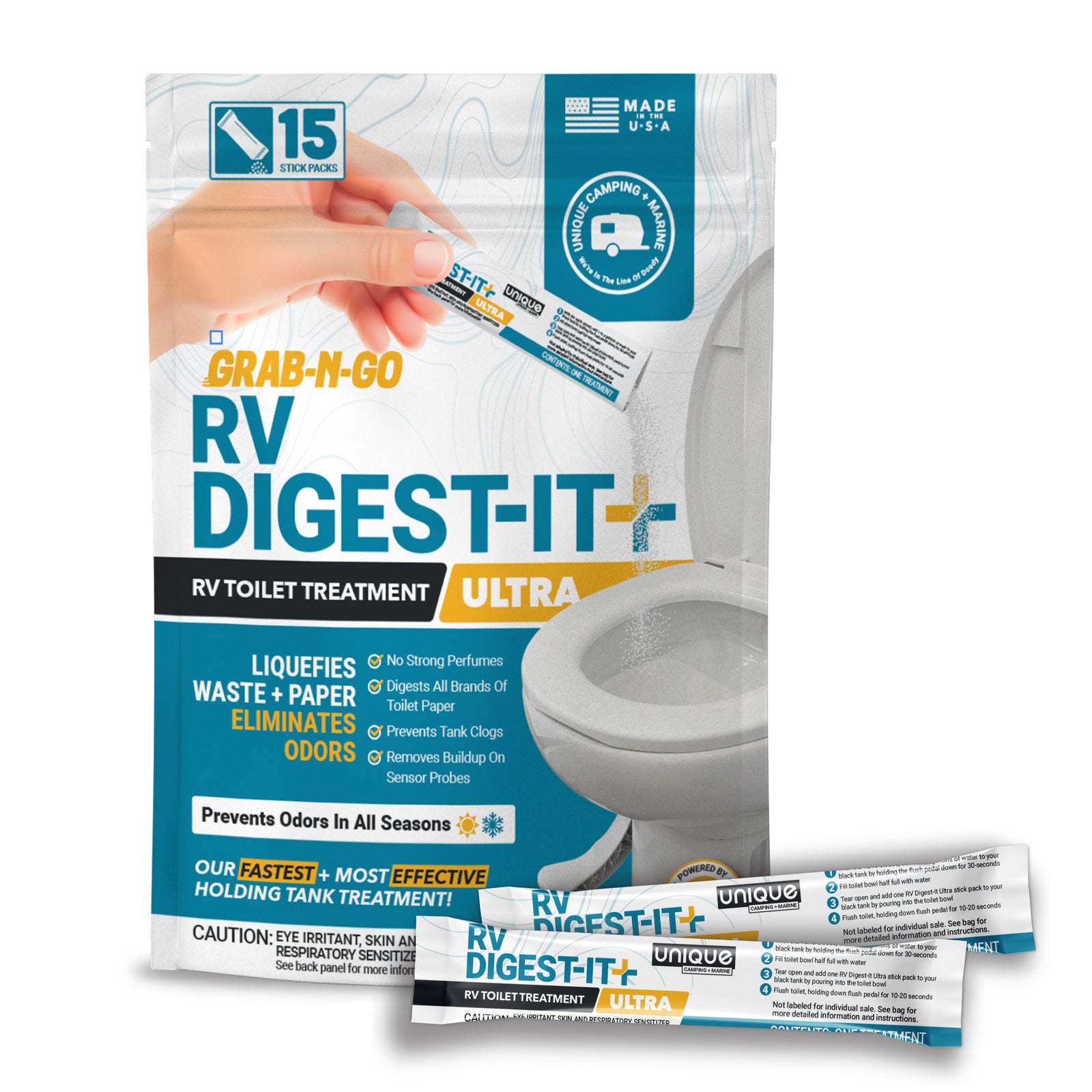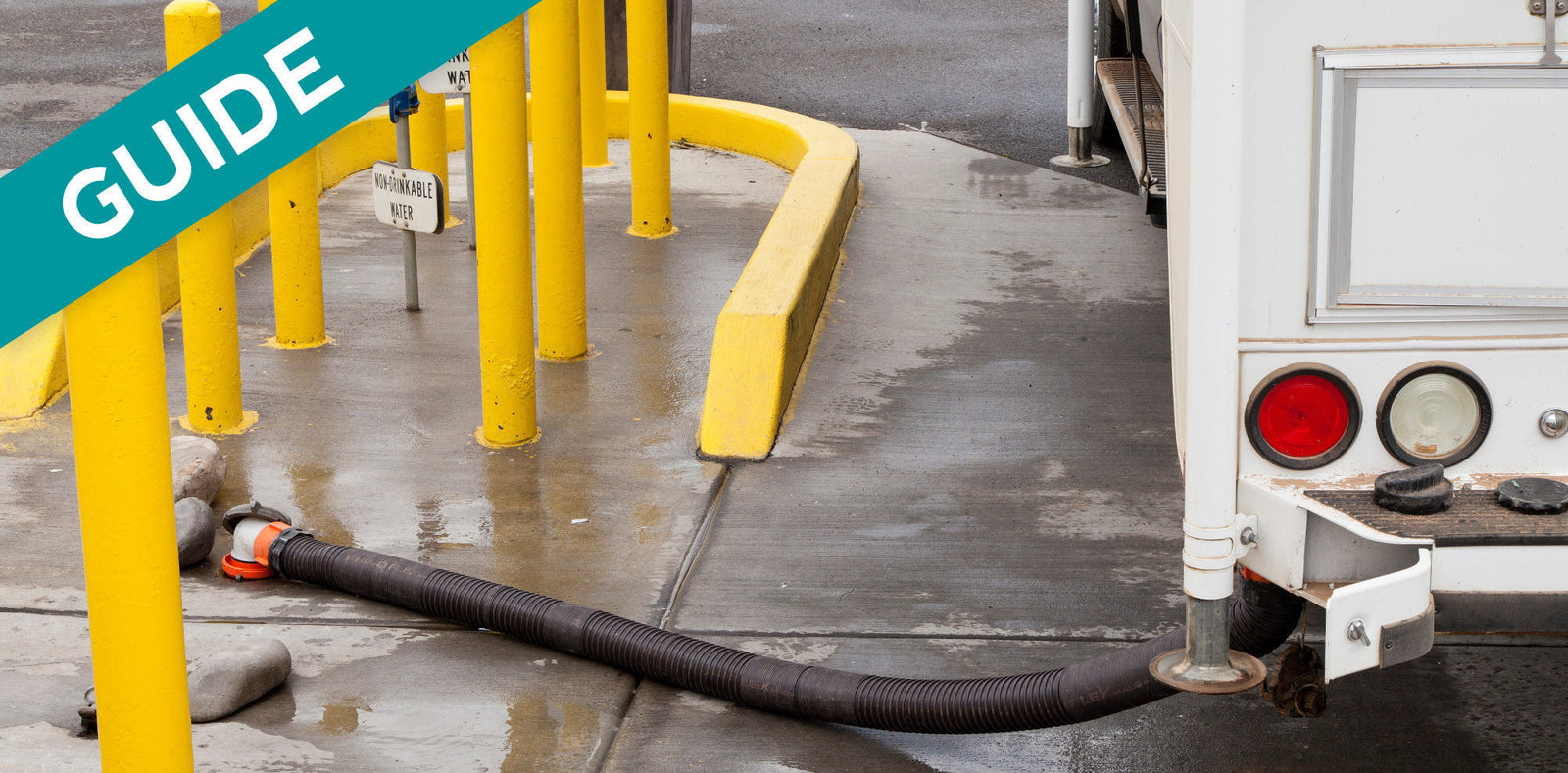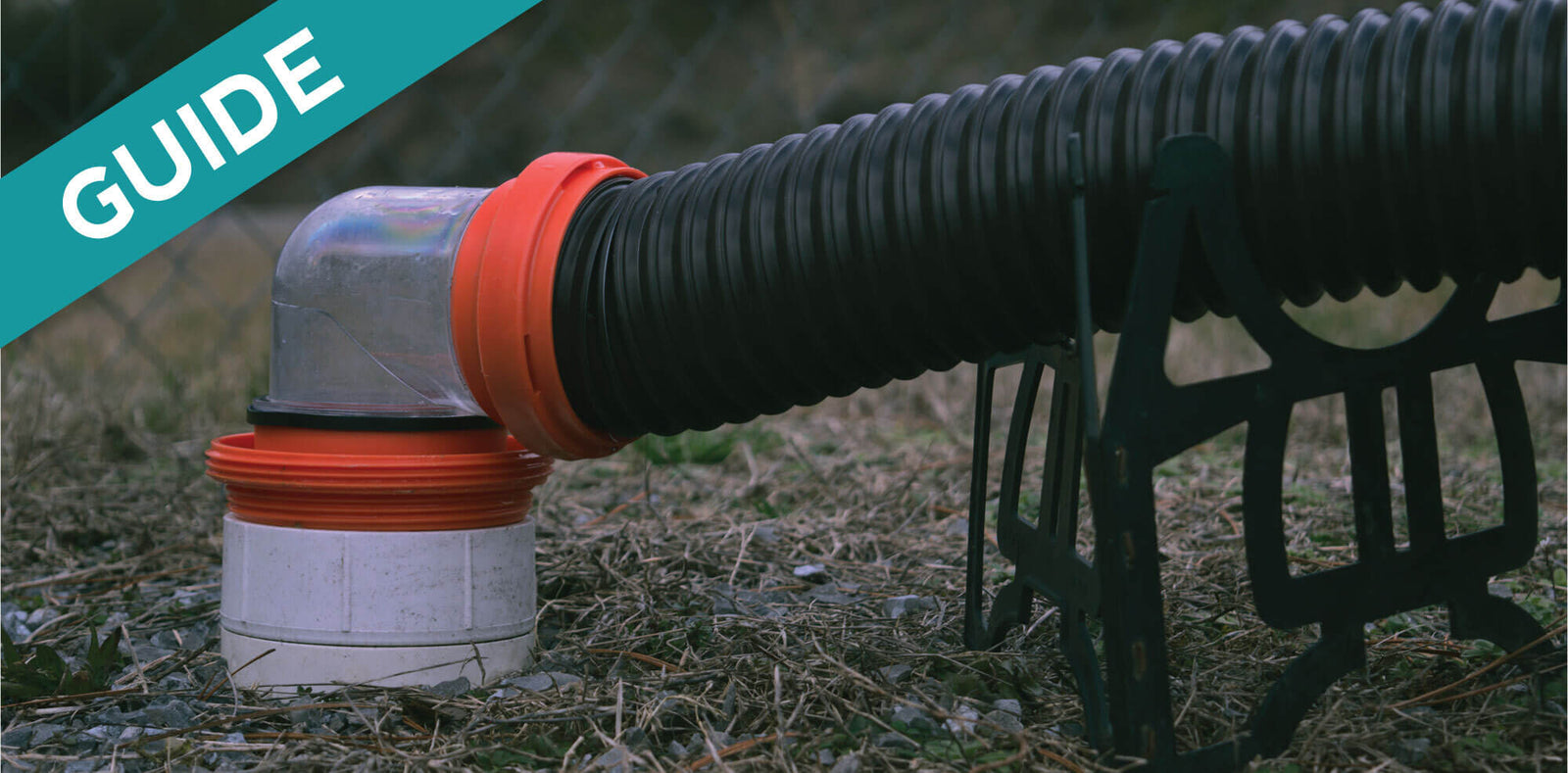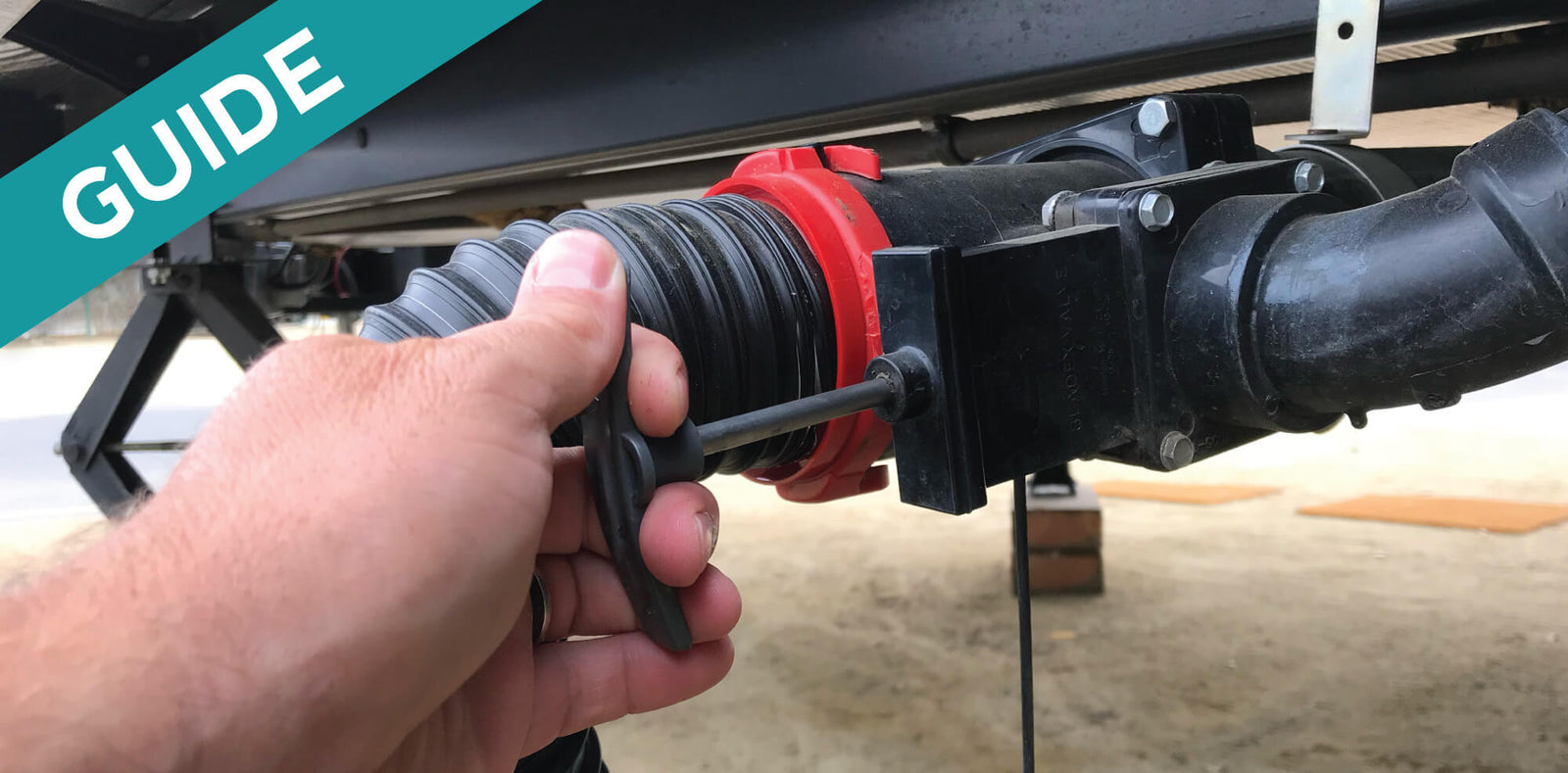
Key Points:
- Various tank rinsing tools exist, from built-in systems to portable options.
- Always wear gloves when handling waste disposal.
- Clean rinsing tools after use to maintain sanitation.
Even seasoned RVers may believe rinsing isn't necessary, but neglecting it leads to clogs and odor issues. Regular rinsing ensures sensors function properly and prevents waste buildup. Here’s a guide on rinsing tools, their usage, and maintenance.
Tank Rinsing Tools
There are several different types of tank rinsing tools you could use depending on what your RV is or is not already equipped with.
- Built-in Tank Rinser – Installed in some RVs, it sprays water inside the black tank when a hose is connected.
- Tank Rinser Wand – Inserted through the toilet, it sprays water around the tank for effective cleaning.
- Tank Backflusher – Attaches between the black tank valve and sewer hose to backfill and flush waste.
- Rotary Tank Rinser – Aftermarket option requiring drilling into the tank for permanent installation.
- Power Washers – Used by professionals for deep cleaning.
Important: Be sure to designate a specific garden hose for rinsing black tanks only; NEVER use this hose for drinking water. Human waste and drinking water don’t go well together.
How to Use an RV Tank Rinsing Tool
Each rinsing tool functions similarly to clear waste buildup from the tank walls, floors, and sensors:
Using a Built-in Tank Rinser
- Connect the discharge hose to the sewer.
- Close the black tank valve and fill the tank with water.
- Attach a dedicated garden hose to the rinser port.
- Turn on the hose and monitor water levels.
- Once full, open the black tank valve to flush waste.
- Repeat until the water runs clear.
- Dump gray water to rinse the sewer hose.
Note: We also recommend using your black water specific garden hose to rinse out the sewer discharge hose to make sure there is no leftover waste.
Using an RV Tank Rinser Wand
There are two basic rinse wand designs: rigid and flexible. Rigid wands are for toilets directly above the black tank, while flexible wands are for toilets offset from the black tank. Rigid wands with a right angle tip are more effective for controlling the spray and cleaning the tank. Flexible wands with a spinning sprinkler head are less effective.
Before you start, make sure to put on gloves to protect yourself.
- Hook up the discharge hose to the sewer.
- Open the black tank valve to empty waste.
- Close the black tank valve and attach a garden hose to the rinser wand.
- Shut off RV’s fresh water and insert the wand into the toilet.
- Turn on the hose, filling the tank until water backs up.
- Open the black tank valve to flush waste.
- Repeat until clear water flows.
- Turn off the hose, release pressure, and disconnect the wand.
- Dump gray water to rinse the sewer hose.
Note: For more details on cleaning dumping tools, refer to our guide on Proper Care of RV Dumping Tools.
There are also videos out there that will show you how to make a DIY tank rinser wand for much less than rinser wand products on the market. If you’re handy and want to save some money, this could be the option for you, but if that’s not your thing or you’re not sure about your DIY skills, opt for buying tried and tested rinser products like the Camco Rinser Wand products.
Using a Tank Backflusher
A hose backflusher replaces the elbow fitting between the discharge hose and tank valve. It has a hose inlet and shutoff valve, and some have a knife valve to stop backflow. Backflushers with a knife valve are recommended, as most RV plumbing fittings reduce water flow and prevent backflow into the black tank.
Make sure to dump all wastewater before flushing your tank using this tool.
Before you start, make sure to put on gloves to protect yourself.
- Attach the backflusher to the discharge valve and sewer hose.
- Connect a garden hose to the backflusher.
- Open the black tank valve to drain waste.
- Close the valve and turn on the hose to fill the tank.
- Monitor the water level and flush when full.
- Detach and clean all tools.
Note: For more details on cleaning dumping tools, refer to our guide on Proper Care of RV Dumping Tools.
Using a Rotary Tank Rinser
A rotary tank rinser (like this Camco Tornado Tank Rinser), requires permanent installation. If installed, follow the built-in rinser procedure. Filling and draining the tank multiple times is the most effective method.
Many of the tools which are on the market for tank rinsing are less effective than you may be led to believe. However, if they are still able to help you fill the tank with water there is still a benefit to using them.
If you really want to employ this option, there are lots of articles online that will walk you through installing it and using it. Or you can pay to have someone professionally install the tank rinser so you can feel confident the installation was done correctly.
Hiring a Professional
For thorough cleaning, consider a tank cleaning service using high-powered pressure washers to deep clean your RV holding tanks. You can learn more about deep cleaning your RV holding tanks here.
Cleaning RV Tank Rinsing Tools
Avoid bleach, as it can damage rubber seals. Instead, soak tools in water with antibacterial dish soap. Always wear gloves when handling dumping tools.
Note: For more information on caring for RV dumping materials, refer to our guide on Proper Care of RV Dumping Tools, and always wear gloves when cleaning dumping tools.
Summary
- Choose a rinsing tool based on your RV’s setup and preference.
- Built-in rinsers, wands, backflushers, and rotary rinsers each have unique advantages.
- Rinse thoroughly after each dump to prevent clogs and odors.
- Clean all tools properly to maintain hygiene.
Proper maintenance of your RV’s waste system ensures a hassle-free experience. In the next guide, we’ll cover additional dumping tools and their storage solutions.

Prevent Common Problems In Your Tanks!
From misreading sensors, preventing clogs, or eliminating odors, we've got you covered no matter how you camp! All our best holding tank tips and trick information plus more can be found conveniently in one place when you download our FREE Unique Method Field Guide PDF. Achieve holding tank bliss today!
Get The Free Download Get The Free Download



